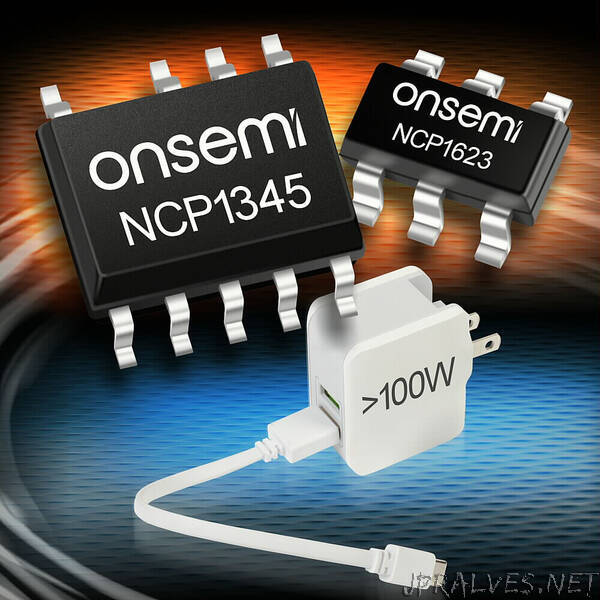
“Higher frequency AC/DC controllers and drivers improve industrial design while ensuring optimal efficiency across the load range
onsemi (Nasdaq: ON), a leader in intelligent power and sensing technologies, today launched a trio of products for USB Power Delivery (PD) design. The new controllers and driver incorporate innovative features that dramatically reduce BOM content of high efficiency AC/DC power supplies, specifically for load ranges above 100W.
“USB PD is an important and growing application but meeting its efficiency and size requirements is a tough challenge for designers,” said Shane Chilton, senior director, Power Conversion Solutions Group, onsemi. “Thanks to our suite of products, designers can remove up to 15 components from their existing BOM reducing the cost of their designs, while ensuring that they meet the demanding efficiency and performance standards of the application.”
The NCP1345 is a Quasi-Resonant (QR) flyback controller for high-performance off-line power supplies and USB Type-C PD fast charging applications. The high frequency QR operation (up to 350 kHz) allows the size of magnetic components to be reduced. The NCP1345 is compatible with the Limited Power Source (LPS) requirement due to the inbuilt constant output current limit while rapid frequency foldback features ensure excellent light load efficiency.
onsemi’s NCP1623 is a small form factor Boost Power Factor Correction (PFC) controller rated up to 300W for USB PD fast charging adapters and computing power supplies. The device operates in critical conduction mode (CrM) at heavy loads before entering discontinuous conduction mode (DCM) as the load decreases maximizing the efficiency at both nominal and light loads. The NCP1623 can increase efficiency up to 2% at low input voltages and offers a sleep mode of <100μA optimizing the no load input power state.
The NCP4307 is high performance driver for use with synchronous rectification (SR) MOSFETs in multiple high performance switch mode power supplies topologies. The device will self-supply from an internal 200V CS pin, enabling high side configuration and low VOUT without requiring an auxiliary supply. The dual VCC pin selects the optimal VCC source to minimize losses, thereby optimizing designs for wide range VOUT applications.”
